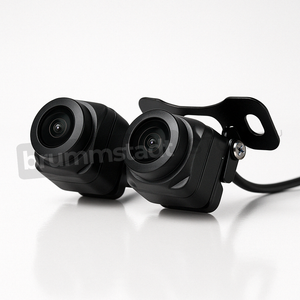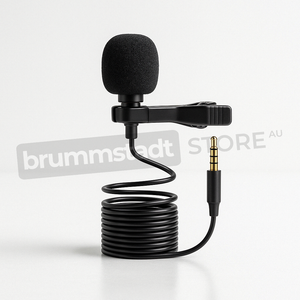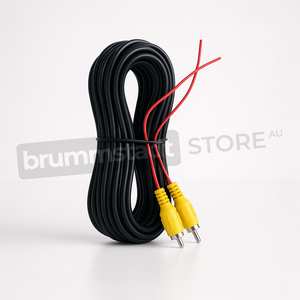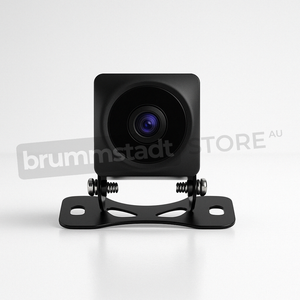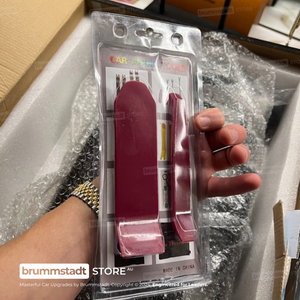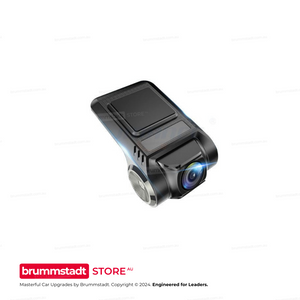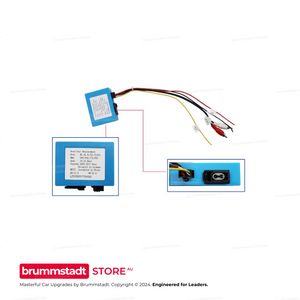Frequently Asked Questions
Everything you need to know about this head unit
Connect the single RCA cable with the yellow plug (included in your package) to extend your Bluetooth signal. This cable doubles as both a camera input AND a Bluetooth/WiFi antenna extension. The two small blue wires attached are antenna boosters that significantly improve connection stability. This simple connection takes 30 seconds and resolves 90% of Bluetooth issues. Make sure it's firmly connected even if you're not using a rear camera.
Try these proven solutions:
1. Quick Fix: Settings → Apps → Z-Link → Disable → Enable → Open (repeat each use)
2. Check Cables: Use the data/charge USB cable (not charge-only)
3. Bluetooth Setting: Disconnect all other Bluetooth connections - CarPlay needs exclusive access
4. Factory Reset Z-Link: Find the pink 'RESET' app, restart, reconnect Bluetooth, then try Z-Link
5. Sound Issues: Switch audio source to 'AUX' or 'USB/AUX' in your vehicle menu
Most issues are resolved with step 1 or 3!
The processor differs between models: The 2/32GB has a 4-Core processor, while 4/64GB and 8/128GB models feature the powerful 8-Core Cortex-A55 processor. Combined with RAM differences: The 2/32GB model with its 4-Core processor and limited RAM may experience slowdowns with heavy multitasking. The 4/64GB with 8-Core provides smooth performance for most users - no lag, seamless app switching, and enough storage for maps and music. The 8/128GB with 8-Core offers maximum performance with its generous RAM allowing unlimited multitasking and massive storage for extensive media libraries. Think of RAM like your desk space - more RAM means you can have more apps open simultaneously without slowing down.
Absolutely normal! These head units are complete replacement systems with their own GPS antenna, microphone, and Bluetooth module. Your factory connectors for these features won't be needed anymore. The important connections are: main power harness, speaker outputs, and the yellow RCA cable (even if not using a camera - it extends Bluetooth range). Any leftover factory plugs can be safely tucked away. If you're unsure about any connection, our support team is here 7 days a week.
Z-Link updates are handled through system firmware updates. Go to Settings → System → System Update. If an update is available, download it to a USB drive (FAT32 format) and install. Important: Never download Z-Link APKs from unofficial sources - they won't work and may cause issues. If you're having compatibility issues with newer iOS versions, the disable/enable workaround (Settings → Apps → Z-Link) usually resolves them while waiting for official updates.
Consider your usage:
• 2/32GB (4-Core): Budget option - fine for basic use, but may lag with multiple apps due to 4-Core processor and limited RAM
• 4/64GB (8-Core): Sweet spot - smooth Android Auto/CarPlay, multitasking, and ample storage
• 8/128GB (8-Core): Premium choice - unlimited multitasking, massive storage, future-proof for years
Most customers choose 4/64GB for the perfect balance of performance and value. The extra RAM makes a huge difference in daily smoothness!
The yellow RCA cable's blue antenna wires also boost WiFi signal! Make sure this cable is connected. Additionally, try these tips: Position the blue antenna wires away from metal surfaces, check that your phone's hotspot is set to 2.4GHz (not 5GHz) for better range, and ensure the head unit's WiFi sleep policy is set to 'Never' in Settings → WiFi → Advanced. For best performance with wireless CarPlay, keep your phone within 1-2 meters of the head unit.
Go to Settings → Sound → Equalizer and adjust to your preference. For more volume, increase the 'Loudness' setting. The 4/64GB and 8/128GB models have superior audio chips that provide cleaner, louder sound. If you have an amplifier, use the RCA outputs for best quality. Also check Settings → Factory Settings (password usually 126) → Audio settings for additional gain controls. Remember: higher-spec models (4GB+) include premium audio components for noticeably better sound.
Yes! Most vehicles work instantly. If not, use the steering wheel learning app: tap the steering wheel icon, press each button on your wheel, and assign functions. For newer vehicles with CANbus, we provide CANbus modules for automatic setup. Some vehicles may need the Key1/Key2 wires connected (usually included in our harness). If you're having trouble, let us know your exact vehicle model and we'll provide specific instructions.
We offer a 30-day return policy. If it doesn't fit or there's a compatibility issue, we'll work with you to resolve it. If you change your mind, a 20% restocking fee applies. Our team verifies compatibility before shipping to minimize issues. We provide installation support 7 days a week to help resolve any problems. With our 3-year warranty and Australian-based support, you can purchase with confidence. Full details in our Refund Policy.
Historical Perspective of the Nissan Tiida (2004–2012):
While Nissan enthusiastically promoted the Tiida across global markets, its launch year varied slightly depending on the territory—initially appearing in Japan from late 2004 and then more broadly through 2005. With an emphasis on spaciousness, fuel economy, affordable pricing, and everyday practicality, it rapidly became a car well-appreciated by drivers seeking dependability with an uncluttered urban aesthetic.
The Tiida was built upon the Renault–Nissan Alliance’s flexible and resourceful B-platform, shared notably with the Renault Clio and Nissan Note. Its cleverly designed interior showcased generous rear legroom and notably dignified comfort compared to similar segment vehicles at the time. The design balance avoided extreme stylistic statements, favoring instead a subtle yet clean European-inspired profile combined with genuinely impressive cabin roominess. Hatchback and sedan variants offered additional versatility, ensuring broad customer appeal.
Powertrain options typically covered fuel-efficient petrol engines between 1.5L and 1.8L capacity, primarily designed around urban and suburban commuting duties, emphasizing low running costs over outright performance. For example, the 1.8-litre petrol engine—the preferred option for many export markets—supplied adequate lively response suitable for city tasks or open road cruising while achieving commendable fuel economy.
In terms of driving experience, the Tiida impressed consumers around the globe with its lightweight and comfortable steering feel, commendable urban maneuverability, and ease when navigating city traffic. Within its lifespan, the Tiida earned fans who valued straightforward functionality, reliability, hassle-free ownership experiences, and overall ease-of-use, endearing itself particularly in regions such as Australia and New Zealand, where economical, easy-to-maintain vehicles garnered substantial popularity.
Exploring Modern Upgrades and Infotainment:
Meanwhile, developments in automotive technology have proceeded significantly since the Tiida’s original production run from 2005 to 2010, particularly regarding multimedia integration and connectivity features. Factory-equipped Nissan Tiida head units from these years understandably lacked contemporary smartphone synchronization and advanced infotainment protocols.
Recognizing these evolving consumer priorities, brands such as Brummstadt have actively addressed the gap in factory functionality by delivering specifically tailored aftermarket head units designed to transform overall multimedia capabilities for older vehicles like the Nissan Tiida.
Importantly, Brummstadt's head units directly appeal to Tiida owners, offering compatibility with both wired and wireless Apple CarPlay and Android Auto—a decisive leap from original manufacturer specifications. Such compatibility is critical, as it supports widely favored smartphone navigation applications including Google Maps, Apple Maps, and Waze, helping drivers smoothly navigate unfamiliar roads or complex routes.
Consider this scenario: a family enjoys dinner at their favorite local restaurant, after which they plan to visit friends in another suburb. The destination address is conveniently inputted into a smartphone navigation app at the table before departure. As they enter their Tiida, the trip information smoothly transfers directly onto the upgraded head unit’s screen via wireless Apple CarPlay or Android Auto. This effortless convenience significantly simplifies travel logistics, easing driver stress and enhancing passenger comfort.
Brummstadt’s premium head unit also accommodates further enhancements such as an optional upgrade for high-definition 1080p front- and rear-facing cameras, allowing safer driving, improved parking assistance, and providing valuable footage protection through recording capability. Entertainment extends beyond traditional usage as well; rear-seat passengers can effortlessly connect gaming controllers via USB, enabling travelers to engage in family-oriented, multi-player gaming sessions accessible directly through the infotainment screen during long journeys.
Additionally, the head unit facilitates smart voice control integration, pairing seamlessly with assistants such as Google Assistant or Siri. With voice commands, the system manages music playlists, navigation routes, incoming calls, and text messages, maintaining driver attention on the road. A further intriguing potential is the integration with smart home devices, enabling occupants to remotely turn home lighting on in anticipation of their return via straightforward commands issued directly through the infotainment unit—an innovative, reassuring connection to home-life support extending beyond a traditional automotive system’s climate and entertainment boundaries.
Undeniable Driving Joy and Enhanced Experience:
The Nissan Tiida’s initial desirability stemmed from practical yet confident handling dynamics, fuel-efficient drivetrains, impressive internal space utilization, and the simplicity and reliability expected from a quality Japanese automaker. Though its fundamental strengths remain relevant today, integrating innovative features through effective aftermarket installations significantly elevates owner satisfaction and utility.
Adding thoughtfully engineered infotainment solutions and modern vehicle technology, such as Brummstadt's head unit, creates tangible value and transformative improvements in driver and passenger engagement. The enjoyment stemming from effortless navigation, safer parking maneuvers via enhanced camera systems, engaging entertainment amenities, and streamlined voice-driven operation preserves and extends the long-lasting appeal of the Nissan Tiida.
Thus, with contemporary technological integrations that skillfully complement the Tiida’s original sensible virtues, drivers and passengers alike discover renewed pride, satisfaction, and meaningful enjoyment—a thoughtfully blended synergy of traditional practicality with modern convenience.


















